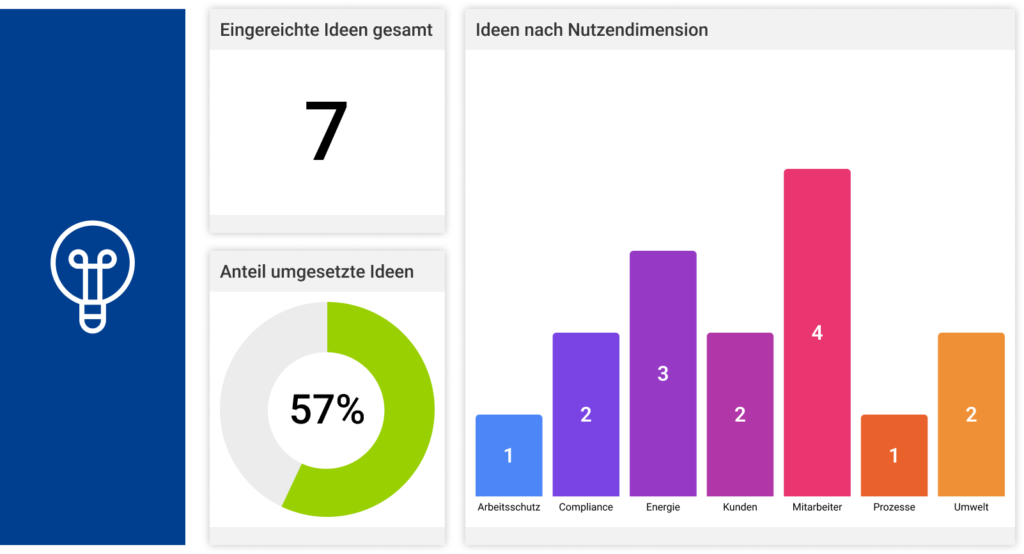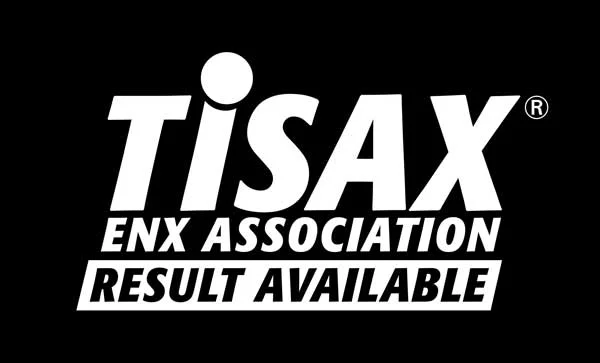How much it costs to control, monitor, track and evaluate/report actions depends closely on the software used. This article provides an overview of the total costs, amortization and savings potential(s) of a professionally operated action management system.
The control, monitoring and evaluation of actions (measures) is part of everyday life in many companies across all industries and company sizes. After all, measures are nothing more than the result of internal and external processes: they can be derived from strategic goals, represent concrete tasks of a project, or be the result of the application of various CIP methods.
As a rule, measures pursue a concrete project, comprise a self-contained task, possibly a description of the expected result, are linked to a defined target date and have a clear responsibility. An efficient management of these actions thus has a direct influence on the performance of a company – especially with regard to the achievement of its objectives.
Find out here why every project needs individual project software – and why it deserves it.
It is therefore not surprising that controlling and monitoring actions plays a central role in companies. However, this is connected to a considerable organizational and often also personnel expenditure.
Specifically, the following tasks should be carried out:
- Planning of the actions and description of the expected results and/or states
- Control of the processing progress of the individual actions
- Intervention when deadlines are exceeded (or preferably before)
- Evaluation of actions, individually and collectively, in terms of execution and effectiveness or contribution to results
- If necessary, return for rectification or definition of further tasks in order to achieve the defined goals or conditions
- Otherwise, completion and documentation of the results achieved
- Comprehensive evaluations for progress and result reporting, analysis and derivation of CIP topics
Actions over actions?
A simple calculation example shows that all this is not trivial: Assuming that a company has only two measures per employee per month, in a 100-person company there are already 2,400 measures per year that need to be handled.
10 meetings per month each with 10 distributed tasks lead to the same result. In addition, there are measures from audits, projects, suggestions for improvement, etc. The above examples result in 600 actions every quarter. At the end of each quarter at the latest, it is customary for the persons responsible to receive an overview of the “execution” (or “non-execution”) of all measures within the company, i.e. a management report that discloses the status report of all actions of the respective quarter.
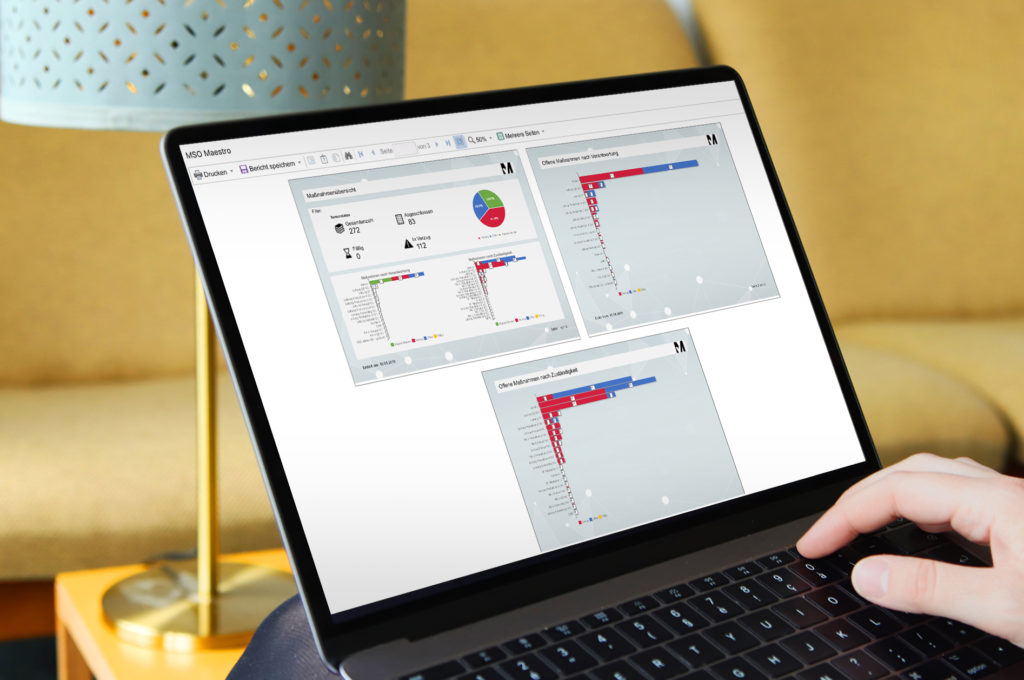
Good reports save time and money
In order to be able to make qualified statements at all about the progress of actions and thus also of performance and/or compliance of a company, one needs a lot of data, which, however, often have to be compiled, consolidated, checked, adapted if necessary and prepared in such a way that a meaningful report on the “current” situation can only be created with difficulty and considerable effort from different lists and formats. But how “meaningful” is a report that is sometimes compiled manually over several weeks with the help of Excel lists?
Excel good, all good? Read why Microsoft Excel can’t replace real management tools in this blog post
On the one hand, such an approach ties up many resources and, to top it all off, is inaccurate: the data is already out of date at the time of the presentation to the Management Board. This makes it more difficult for managers to be up to date and makes it impossible to intervene in good time – at this point, business damage can usually no longer be prevented.
So how can companies waste fewer resources and still produce up-to-date and meaningful reports at any time? With software, or more precisely: software-supported action management. The use of the right management software ensures that the effort for data input and evaluation is reduced to a minimum.
Managers therefore receive exactly the information they need for their analyses. The use of dedicated software for action management thus leads to significant cost savings, as outlined in the following section.
High costs through conventional action management
The calculation is based on the assumption that of the 100 employees in our example, only half, i.e. 50, have anything to do with “actions”. Three of these 50 employees work in top management, three other employees are responsible for preparing the action reports and the remaining 44 employees are only responsible for implementing the actions.
If it is now determined (conservatively calculated) that an executive is occupied with controlling measures for approx. 24 minutes per day (5%), a person responsible for reporting for approx. 120 minutes per day (25%) and all other employees for only 4.8 minutes (1%) per day, the following (personnel) cost breakdown results:
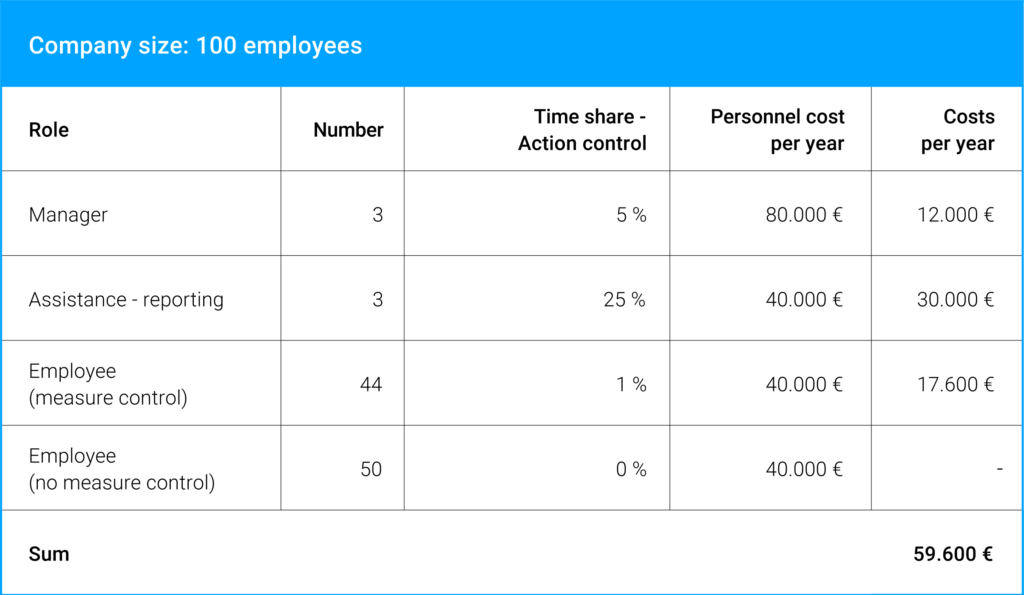
How software-supported action management reduces costs
The situation is different with software-supported action management: With the help of software, the time required to control measures – and thus also costs – can be reduced by up to 70%. Significant savings, as the calculation example shows.
According to this, a potential savings potential of approx. 119,200 € – 166,880 € results over a period of four years. If one compares these amounts with investment costs of € 32,000 (total cost of ownership), for example, the return on investment (ROI) for the four-year period under review is between an impressive 372.5% and 521.5%, with the break-even point being reached after less than a year.
Even if the worst-case scenario occurs, companies can achieve cost savings of 50% with the introduction of software-supported action management.
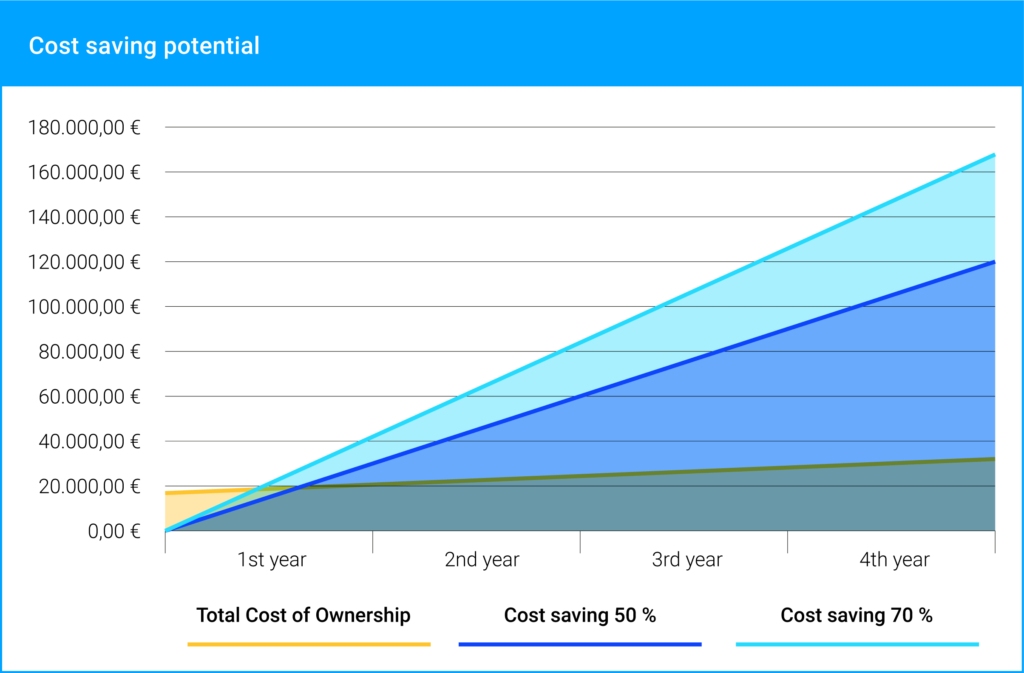
Conclusion
The example illustrates that introducing software-based action management is worthwhile from an economic point of view alone for companies of all industries and sizes – not to mention the organizational and qualitative improvements that result from data analysis and optimized resource allocation oriented to current needs.




